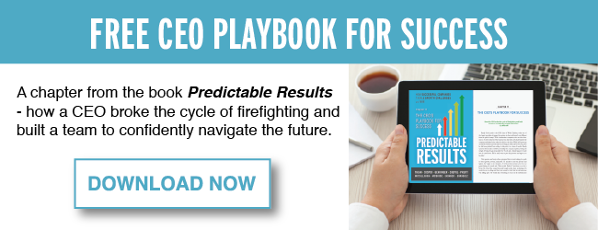Get a job, learn to be competent, and you can find work anywhere. Learn a skill and you’ll never want for  work. You build your legacy as a leader when you are the best at what you do, your occupation, and the best in the way that you do it. Be good in how you treat people, positive in your attitude and your actions. This is the type of advice we've heard for years – and, it’s wrong. Competent does not mean being the best.
work. You build your legacy as a leader when you are the best at what you do, your occupation, and the best in the way that you do it. Be good in how you treat people, positive in your attitude and your actions. This is the type of advice we've heard for years – and, it’s wrong. Competent does not mean being the best.
One definition of competent, according to the Oxford dictionary, is: acceptable and satisfactory, though not outstanding. The definition includes the synonyms: adequate, acceptable, satisfactory, reasonable, fair, decent, not bad, all right, average, tolerable, passable, moderate, middling.
Middling. That's not a definition to describe the type of business you want. In fact, being competent at what you do means that you’ll soon suck as a performer … and at best, be mediocre.
Imagine, being competent at building a Beta video technology product. Yeah, I know that some of you never heard of it - they got squashed by VHS. Being competent in Beta is worthless. And now, so is being competent at VHS. Or, what about DVD? Does anyone have a DVD player anymore? If they do, I bet they don’t use it often. Ideas and breakthroughs are happening too fast for you to afford to be competent. It’s just unacceptable.
Ray Kerswell said in March 2001, “An analysis of the history of technology shows that technological change is exponential, contrary to the common-sense 'intuitive linear' view. So we won’t experience 100 years of progress in the 21st century — it will be more like 20,000 years of progress (at today’s rate). The 'returns,' such as chip speed and cost-effectiveness, also increase exponentially. There’s even exponential growth in the rate of exponential growth. Within a few decades, machine intelligence will surpass human intelligence, leading to The Singularity — technological change so rapid and profound it represents a rupture in the fabric of human history. The implications include the merger of biological and nonbiological intelligence, immortal software-based humans, and ultra-high levels of intelligence that expand outward in the universe at the speed of light.
Do you care about these stats if your industry is outside technology? You do unless you consider competent a strategy. The technology growth outlined in Moore’s law (a doubling in two years) is being proven in industries outside of technology. There was recently a live test in Haiti to deliver medicines. Drones are currently carrying 4-kilo packages about 10 kilometers. The underlying drone technology is doubling about every 9 months, and, if this holds true, it means that next year the drone capability will be 8 kilos for 20 kilometers, and the year after 16 kilos for 40 kilometers, etc. If you were competent, you might miss the fact that while you design the delivery situation, the drone technology will be ready for you.
You may have seen another example from Scott Kelly who just returned from one year in space. The International Space Station's 3-D printer printed a tool (ratchet wrench) with a design file transmitted from the ground to the printer. Can you imagine a future in spaceflight where you print the parts you need as they fail? Apollo 13 could have used it.
What about auto drivers, with … no driver? Or a driverless car that can repair itself with an array of miniature 3D printers standard mounted … or one that performs its own maintenance? How about driverless trucks, including eighteen wheelers with tandem trailers? How about a train traveling through your city without a conductor?
Leaders of successful fast-growth companies have an edge over mediocre leaders and companies. They share one core quality. And what is it? Were they were raised in an environment that valued education, given more during the formative years the rest of us never received like extra tutoring, or were they naturally smarter than their classmates? Actually, the hidden skill that determined their success was their ability to adapt, and really great leaders ensure that their team can adapt, too.
Recent client examples include:
- A leader that replaced the company controller after numerous accounting errors and restatement of earnings began to affect their banking relationship. Competent leaders replace and let the replacement clean up the mess. This company CEO turned up the heat on the new controller, required all other inquiries of the controller to be filtered through the CEO first, and hired two additional contract workers to assist in getting past earning statements correct. The goal was to (correctly) close the books in 5 business days from the end of the month from a previous best of 15 days.
- A company leadership team that has systematically challenged each aspect of their business starting with transparent alignment and focus on the most important things weekly to then making decisions to improve in certain areas or reduce headcount. Competent is no longer tolerated.
There are three ways that great leaders seem to break out teams from the competence trap, and these are learnable skills for you and me. They are spontaneous control, scale recognition, and long-term perspective.
Here’s a look at each and how you might leverage them for personal, team, and business success:
Spontaneous Control: This the ability to grab, consider, manage and even optimize your response at the very moment adversity strikes. When faced with an unexpected situation or crisis, many of the untrained reel in their spontaneous control, after an initial blowup. If you’ve ever been in a manual shift car with a driver that was inexperienced, you’ll know what it feels like when gears aren’t shifted smoothly. Top performers seamlessly shift from being presented with a situation to a smooth reaction (without an external show of crisis). This is a feature of their internal operating system and it’s one that you can work on and improve. When successful, you'll enjoy the payoff of increased trust, respect and successful leadership in the workplace.
Scale Recognition: This is recognizing where a crisis fits in the "bigger" picture. Those caught in the competence trap often catastrophize, allowing adversity to take over their time and energy before getting it under control. They’re knocked off their game when a relatively small adversity arises. Leaders who remain amused and determined when adversities occur are the in a better position to achieve their goals. True leaders don’t hope for fewer problems, rather the capacity to handle more, regardless of what issues come their way.
Long-Term Perspective (Endurance): This is the perception of how long the adversity will last. Competent leaders perceive adversity as enduring. Those who break free are the ones that remain optimistic and determined, confident that the situation will reverse itself quickly.
Once you understand your current competence level and how to improve it, you can use your own skills to coach others. You can also use these tools in hiring by identifying those candidates who possess strong adaptability skills, eventually strengthening the adaptability of the entire organization.
Photo Credit: iStock by Getty Images
Photo Credit: iStock by Getty Images



 LinkedIn
LinkedIn
 Facebook
Facebook

